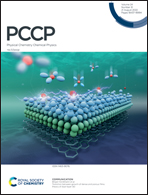Hole transport free carbon-based high thermal stability CsPbI1.2Br1.8 solar cells with an amorphous InGaZnO4 electron transport layer†
Abstract
Due to their low cost, tunable band gap and excellent thermostability, all-inorganic halide perovskites CsPbX3 (X = Br, I) have become a kind of promising photovoltaic material. However, compared to the organic–inorganic hybrid perovskite solar cells, the performance of CsPbX3 solar cells still needs to be improved. In this work, for the first time, we applied the sol–gel derived amorphous InGaZnO4 film as electron transport layers (ETLs) in CsPbX3-based devices. In these devices, the carbon electrode deposited by screen printing replaced the unstable hole transport layer and the expensive metal electrode to obtain hole transport free carbon-based devices, which significantly simplifies the preparation process and reduces the production cost. With the application of amorphous InGaZnO4 films, devices show a relatively high power conversion efficiency (9.07%) and excellent thermal stability. Compared with the reported CsPbX3 devices using SnO2 or TiO2 ETLs, the performance of amorphous InGaZnO4 based devices has been significantly improved. This work provides a promising route to prepare highly thermally stable all-inorganic perovskite solar cells using a-IGZO films.



 Please wait while we load your content...
Please wait while we load your content...